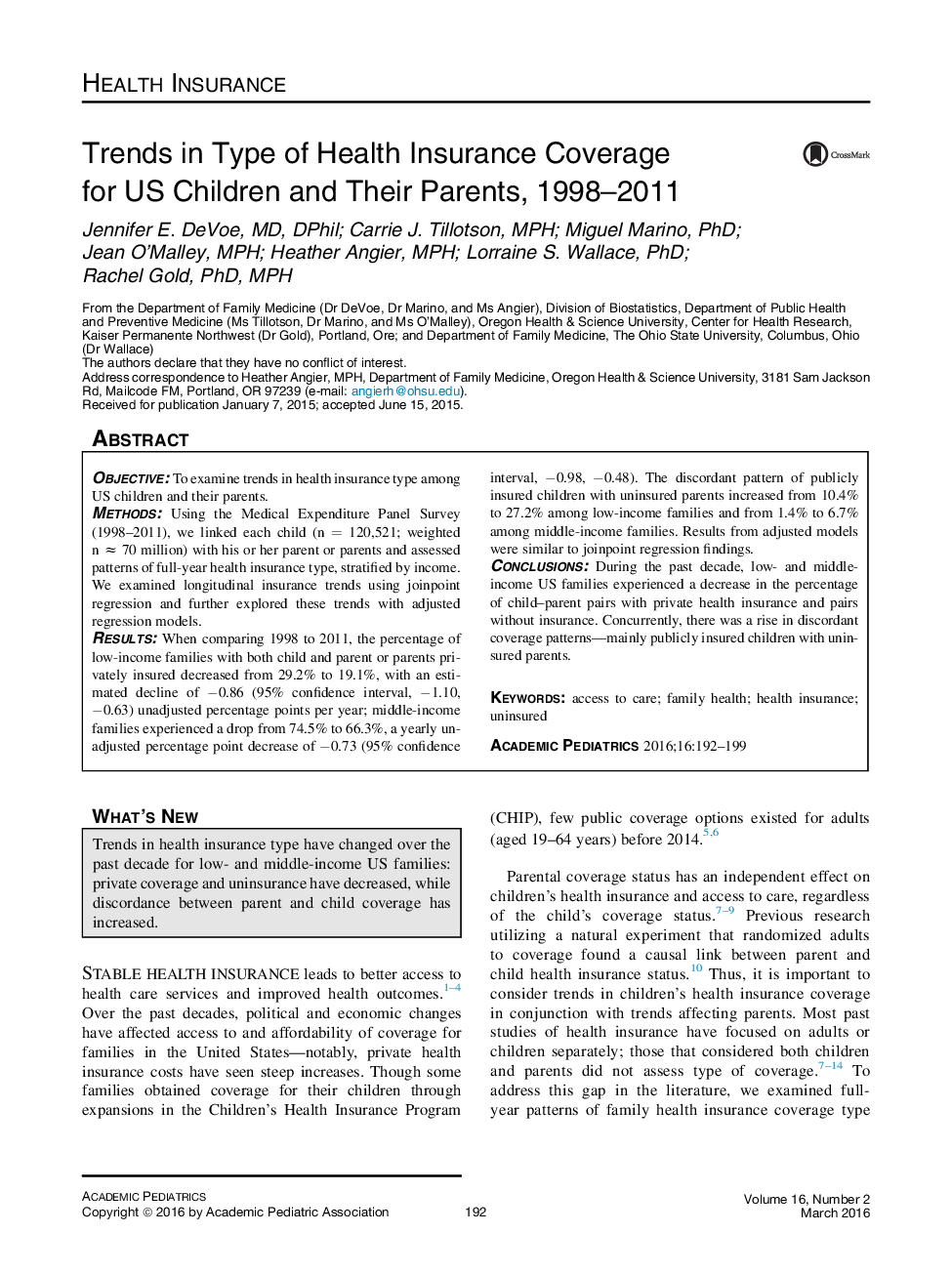| Article ID | Journal | Published Year | Pages | File Type |
|---|---|---|---|---|
| 4139142 | Academic Pediatrics | 2016 | 8 Pages |
ObjectiveTo examine trends in health insurance type among US children and their parents.MethodsUsing the Medical Expenditure Panel Survey (1998–2011), we linked each child (n = 120,521; weighted n ≈ 70 million) with his or her parent or parents and assessed patterns of full-year health insurance type, stratified by income. We examined longitudinal insurance trends using joinpoint regression and further explored these trends with adjusted regression models.ResultsWhen comparing 1998 to 2011, the percentage of low-income families with both child and parent or parents privately insured decreased from 29.2% to 19.1%, with an estimated decline of −0.86 (95% confidence interval, −1.10, −0.63) unadjusted percentage points per year; middle-income families experienced a drop from 74.5% to 66.3%, a yearly unadjusted percentage point decrease of −0.73 (95% confidence interval, −0.98, −0.48). The discordant pattern of publicly insured children with uninsured parents increased from 10.4% to 27.2% among low-income families and from 1.4% to 6.7% among middle-income families. Results from adjusted models were similar to joinpoint regression findings.ConclusionsDuring the past decade, low- and middle-income US families experienced a decrease in the percentage of child–parent pairs with private health insurance and pairs without insurance. Concurrently, there was a rise in discordant coverage patterns—mainly publicly insured children with uninsured parents.
